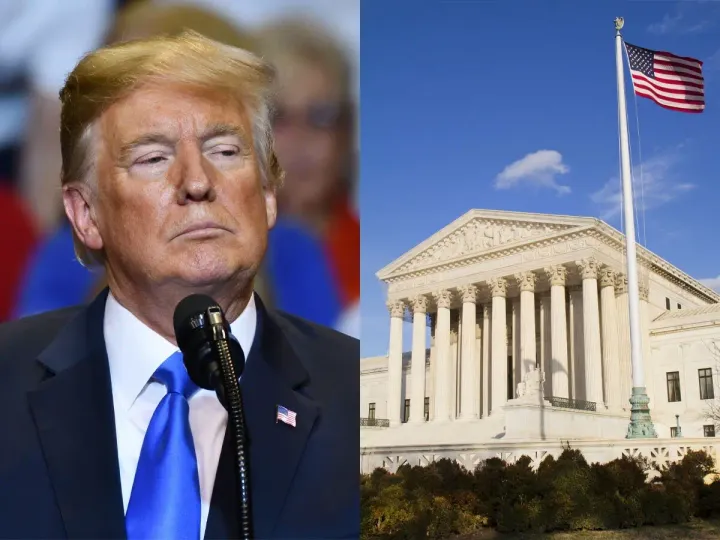'Fright Night' and Conspiracy Theories

1985 was a packed year on the Silver Screen.
It saw such films as: The Goonies, Back to the Future, The Breakfast Club, Rambo: First Blood Part II, Rocky IV, Mad Max Beyond Thunderdome, The Return of the Living Dead, Brazil, Day of the Dead, Re-Animator, Demons, and The Stuff.
Even though Back to the Future is forever one my all-time favorite films, another 1985 flick is hot on its heels. That is Fright Night.
Many of my readers will never have heard of Fright Night. Some may not have but for an atrocious 2011 remake starring Colin Farrell.
In contrast to that unnecessary mess, the original 1985 film is a quintessential 80s horror flick. Some even consider it to be one of the greatest vampire films ever made. It tastefully serves as a bridge between the peak 80s era of practical special effects and the classic horror era of Vincent Price, Peter Cushing, and Christopher Lee.
The film stars the adorably-named Charley Brewster (William Ragsdale), a horror-obsessed teenager living in middle-America suburbia.
One night, while trying to get some action with his girlfriend, Charley sees his new neighbor, Jerry Dandridge (Chris Sarandon) and his man-servant, Billy Cole (Jonathan Stark), moving a coffin into the cellar of the house next door. In the following days, the news begins to report on a series of murders in the area—the victims being all young, attractive women.
The following night, while peeping on the neighbor, Charley sees him caressing a young woman. As the lovers progress, Dandridge bares his fangs and prepares to bite the young woman. Just before the fatal act, Dandridge sees Charley spying and pulls the blinds. Later in the night, Charley hears a bloodcurdling scream.
Over the next few days, Charley tries desperately to convince everyone that Dandridge is a vampire. His conviction is obsessive, causing him to ignore his girlfriend and to fail a trigonometry exam. Charley even brings a police detective over to Dandridge’s house to accuse him of the murders. When the evidence fails to convince the detective, Charley reveals the extent of his accusation and is laughed off.
Later that night, Dandridge confronts Charley in Charley’s room. Dandridge is revealed to be a vampire when Charley stabs him in the hand with a pencil.

After failing to convince his mother, the police, his girlfriend, Amy Peterson (Amanda Bearse), and his best friend “Evil” Ed Thompson (Stephen Geoffreys), Charley ultimately turns to the host of his favorite late night creature feature, legendary (fictional) vampire hunter, Peter Vincent (Roddy McDowall).
Charley accosts Vincent as he is removing his props from the local television station. His show, Fright Night has just been cancelled, citing America’s transition from classic horror to sexually charged 80s slasher films. Vincent writes off Charley’s desperate pleas for help as the ravings of an obsessive fan.
When “Evil” Ed and Amy discover that Charley is sincere in his plan to kill Dandridge, they bribe the down-on-his luck Vincent to help them convince Charley that Dandridge is not actually a vampire. Dandridge gleefully accepts the kids’ invitation to for a public “proving.” When the fateful night arrives, Dandridge passes “the test” of drinking holy (tap) water, but Vincent is accidentally swayed when Dandridge fails to cast a reflection in Vincent’s hand mirror.

The third act is filled with classic horror action and practical effects that have become as iconic and legendary as The Evil Dead films.
But what does the film have to do with conspiracy culture?
In many ways, Charley is an allegory for those who suspect the world’s elites are driven by mutual, sinister ends. Much like Charley’s affinity for Peter Vincent, conspiracy theorists imbibe their favorite content creators. Like Charley, they make stark observations of real world events: they see the neighbor carrying a coffin into the cellar, pretty women visiting the house, and body-sized trash bags being removed. When news develops of murdered women, they put the pieces together and make conclusions.
Further, when theorists become convinced they have witnessed first hand proof of evil, they begin to obsess and seek to convince others of the truth. Very few actually believe them, or the proof they offer.
In Fright Night, Charley’s conviction for justice is his most admirable quality. In this pursuit of truth, Charley is denied by his mother, his friend, his girlfriend, his personal hero, and the police. Nonetheless, he persists to end the string of murders and to save himself.
For his part, Peter Vincent is paralyzed with fear after discovering that Dandridge really is a vampire. After initially intending to flee the city, Vincent instead decides to stay and confront Dandridge. Like Charley’s, his courage is also admirable.
But of course, conspiracy theorists do not often have the (benefit?) of concrete proof and aren’t always true. Furthermore, vampires aren’t real (I guess, depending on who you ask), but Evil is real and conspiracies do exist.
While conspiracy culture has its faults (what if Dandridge actually wasn’t a vampire?) its dissenting conviction for truth and justice should be celebrated.
Escape the Tyranny of Health Insurance
Your healthcare is no longer something that happens between you and your physician. It’s being bought and sold to the highest bidder by politicians in Washington. CrowdHealth is a different way to pay for healthcare which eliminates the need for health insurance and puts decisions about your health back in your hands.
Use promo code LW99 during sign-up for $99/ month for 3 months.




Comments ()